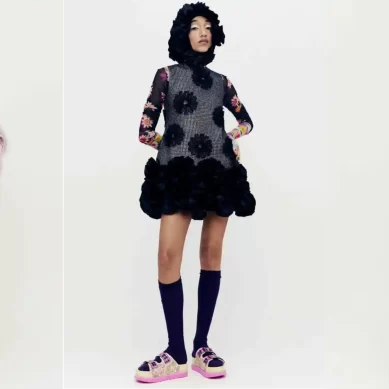
Image source: Pinterest
Pet Therapy is one such strategy that has grown in popularity, a unique and comforting practice that uses animals healing capacity to improve people’s emotional and physical health.In a fast-paced world, worry and anxiety have become commonplace. As a result, people are increasingly looking for alternative and comprehensive ways to manage their mental health. let’s see how pet therapy will help us relieve mental stress.
WHAT IS ANIMAL-ASSISTED OR PET THERAPY?
Animal-assisted therapy, commonly known as pet therapy, uses dogs and other animals, including horses, to assist individuals in their recovery from physical and mental health issues. Animal communication has proven to be useful in both medical and psychological situations.

Image source: Pinterest
HOW DOES ANIMAL-ASSISTED THERAPY WORK?
When someone is dealing with a major physical or psychological issue, they are highly stressed. The tension may impede their recovery process. Pets bring comfort to humans, and spending time together may help them heal more quickly and easily.
Animal-assisted therapy involves having a trained service or therapy animal attend an appointment or visit someone in the hospital. The animal is going to move with an owner or handler who is familiar with working with service animals. The animal’s presence provides a necessary distraction and reduces stress for the patient, which may speed up healing.

Image source: Pinterest
Benefits of Animal-Assisted Therapy
Most pet owners believe that spending time with their furry (or non-furry) friends makes them happy. Pets can also assist people recovering from disease in hospitals, nursing homes, and other mobile environments.
Pet therapy, defined as a directed interaction between a person and a trained animal, has become increasingly popular in treating behavioral health concerns, autism, trauma-related,stress disorder, and depression.
While dogs and cats are most typically used because of their delight and calming effect, other animals such as fish, rabbits, horses, and others can also have an impact. The sort of animal chosen depends on the therapeutic goals.
1. Improved cardiac health.
Petting an animal reduces your heart rate and blood pressure, especially for worried individuals. The activity causes you to release endorphins (relaxation hormones) while reducing tension. This, combined with increased activity, may decrease the risk of heart disease.
2.Creating a feeling of purpose :
When therapy dogs and animals visit patients in hospital and outdoors, a bond develops between them. Patients at Long Island Jewish Forest Hills have stated that the animals rely on them in their final days and that the pets would miss them if they were separated. This connection boosts excitement and confidence, which might help in rehabilitation.
3.Promotes joyful settings.
Pets have an amazing calming impact on people. There’s something refreshing about an animal greeting you like you’re a celebrity. While patients benefit the most from pet therapy sessions, employees also benefit, frequently taking breaks to spend time with them. It’s a wonderful event for everyone, especially the pets, who feel palpable, unconditional affection.
4.Improved partnerships.
Pets improve communication and prevent restlessness. This can be important to individuals who have long hospital stays. This pleasure can flow over into your personal and professional connections. Fear and loneliness can hurt a patient. Sharing affection with animals can help patients deal with a scary outlook or boost morale when family members are unable to visit.5. Higher self-esteem.
Interacting with pets will boost patients – self-esteem by fostering a sense of independence. Being productive can feel empowering. A good attitude provides healing and wellness benefits that extend beyond the hospital doors.

Image source: Pinterest
Risks of Pet Therapy
While animal therapy may benefit people with specific illnesses, it might not be appropriate for everybody. Some individuals may be allergic to the animals commonly employed in treatment. Many individuals are sensitive to allergies. from dog shedding, for instance. For many people, animal therapy with a dog could be significantly more harmful than beneficial. Others may simply feel uneasy or terrified of the animals. They might avoid this form of therapy because it will increase their tension. In rare situations, a person may immediately develop a strong attachment to the animal. This mood may lead to possessiveness or even reduce a person’s contentment with therapy.

Image Source : Pinterest
View this post on Instagram
In conclusion, pet therapy is a powerful and revolutionary technique to improving general well-being. Human-animal bonds have evolved beyond affection to become therapeutic alliances that can greatly improve , emotional, and physical health.
Pets offer unconditional affection, non judgmental presence, and simple pleasure into our lives, which can reduce stress, improve happiness, and foster a sense of connection. Whether in hospital settings, rehabilitation centers, or everyday life, pet therapy is being shown to have a good impact on people of all ages. as humans continue to investigate and embrace our ‘furry friends’ therapeutic value, it becomes clear that the healing power of pet therapy goes far beyond what words can express, offering a unique and vital source of comfort, friendship, and overall wellness.
By: Glana Nikitha Rodrigues



































